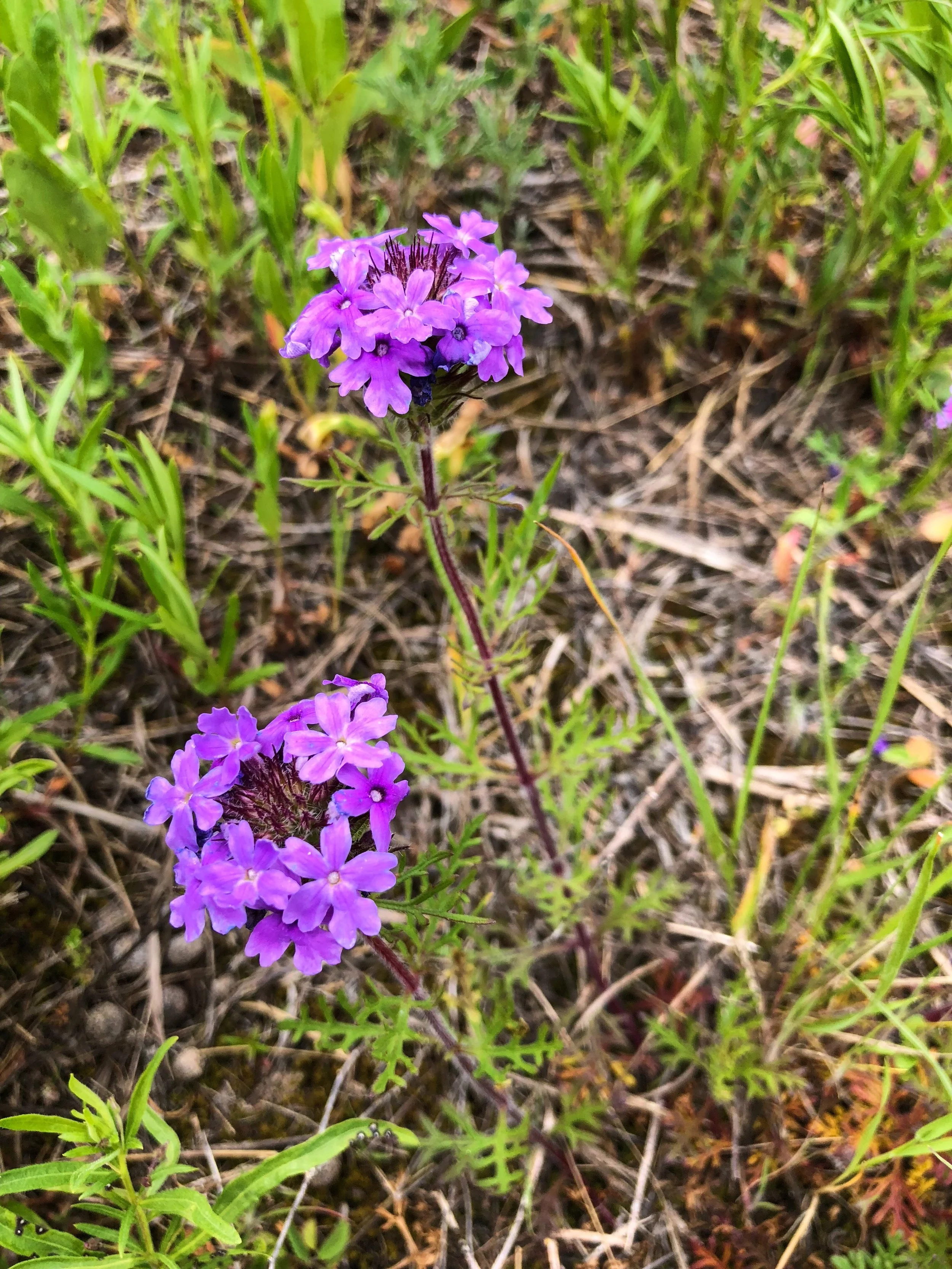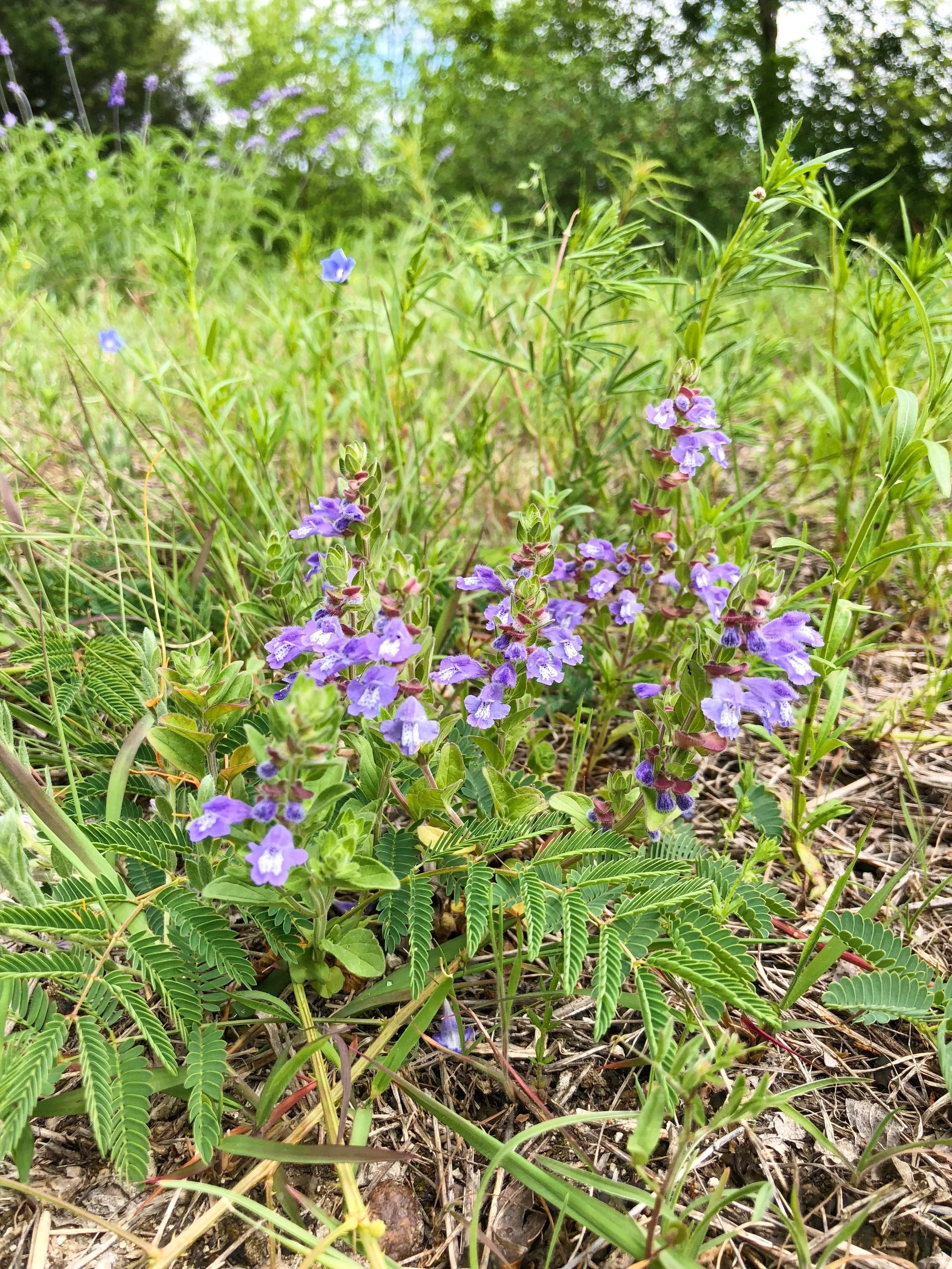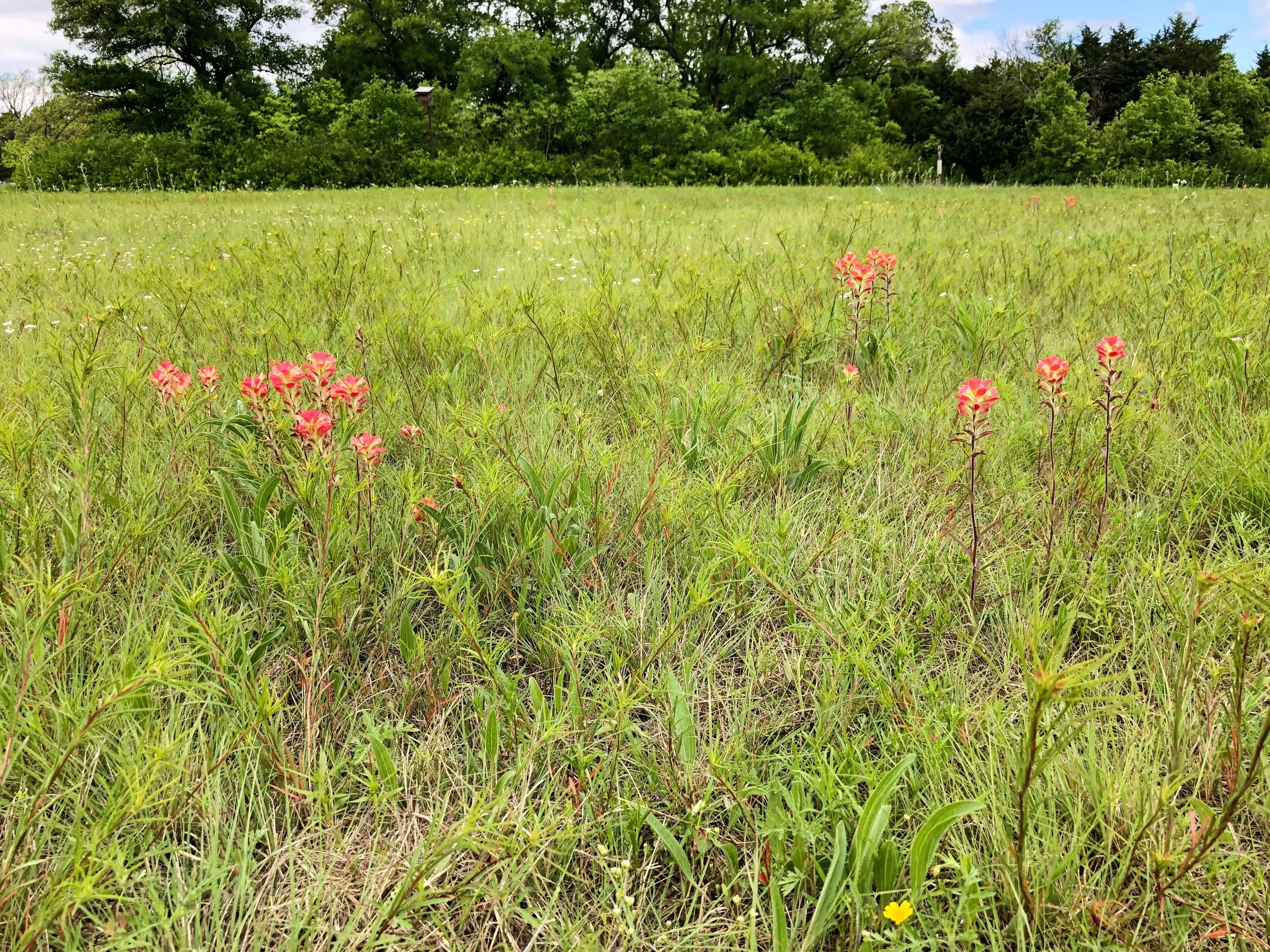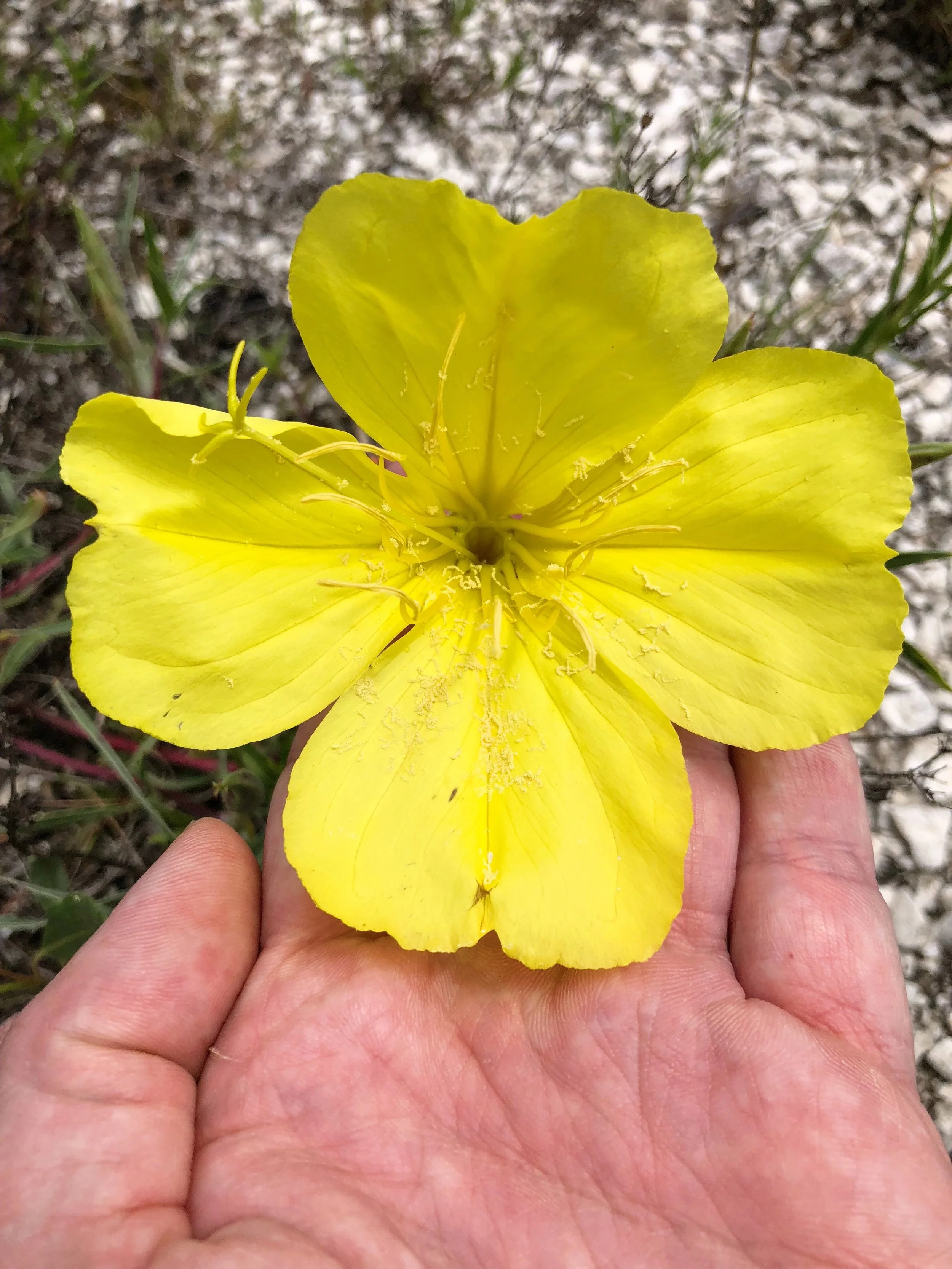Spring Creek Forest Preserve
Spring Creek Forest Preserve is a protected greenspace managed by the City of Garland, saving this Blackland Prairie remnant from the development that has swallowed up the surrounding area. The primary topographic feature here is Spring Creek, which soon after meets Rowlett Creek and empties into Lake Ray Hubbard. The waterway is lined with buckeyes, juniper, and oaks, and this forest of native trees dominate the park. There is a clearing in a central area consisting of a few acres of shallow, limestone soils that support an abundance of native perennials, some of which were in bloom when I visited back in early May.
Spring Creek
Tetraneuris scaposa var. scaposa, Four nerve daisy
Four nerve daisy is not at all uncommon in these parts. This small perennial is a reliable, repeat bloomer during all warm months. It is incredibly drought tolerant and grows in poor, shallow soils.
Rubus trivialis, Dewberry
Pictured above is the white, delicate bloom of dewberry. Eventually this bloom will turn into a dark fruit that resembles a blackberry. They are edible and very tasty when ripe. You will find these growing low to the ground along woodland edges.
Glandularia bipinnatifida, Prairie verbena
Prairie verbena is an incredibly tough and widely-distributed perennial in Texas and the Great Plains. It's durability surpasses that of all common verbena varieties and hybrids available in the commercial nursery market.
Scutellaria drummondii, Drummond's skullcap
Drummond's skullcap is a low-growing, drought-tolerant perennial with purple blooms. This species of Scutellaria will be found throughout most of Texas and into neighboring Louisiana, New Mexico, and Oklahoma. Nurseries mostly carry the pink species (S. suffrutescens), but more species are being introduced into the industry.
Scutellaria drummondii, Drummond's skullcap
Asclepias asperula, Antelope horns milkweed
There are many Asclepias species in Texas, and antelope horns milkweed is probably the most prevalent. The common name of the genus comes from the milky sap that runs from the stem if broken. This plant is a vital food source for monarch caterpillars.
Salvia farinacea, Mealy blue sage
Mealy blue sage is one of just a few native perennials that bloom in hues of blue. Like other salvias, this plant is loved by pollinators including butterflies, bees, and hummingbirds. These blooms will last through the summer into fall, though its heaviest set is in spring.
Penstemon cobaea, Cobaea penstemon
Penstemon cobaea was the greatest find in the preserve. These perennials bloom for a few weeks a year and are notable for their large, bell-shaped flowers. The coloring of the flowers can vary and my photos below show two examples: one with a lavender hue and another with a spattering of purple. Moths are a primary pollinator, but I did observe a variety of insects inspecting the plants.
Penstemon cobaea, Cobaea penstemon
Penstemon cobaea, Cobaea penstemon
Penstemon cobaea, Cobaea penstemon
Penstemon cobaea, Cobaea penstemon
Mimosa roemeriana, Roemer's mimosa
This low-growing groundcover is pretty unnoticeable when not in bloom as these pink puffballs are a highlight, and butterflies enjoy them as a food source. Another distinguishing feature is the ability of the leaves to clasp shut when touched, which is really fantastic.
Engelmannia peristenia, Engelmann's daisy
I've been lucky enough to have Engelmann's daisy growing in my own garden. The plant has cut leaves that lie prostrate to the ground for most of the season. Then in spring, buds rise from the center of the leaf rosette up to 3 feet in height and the yellow blooms have around 8 petals. This species is the only one belonging to the genus Engelmannia.
Castilleja indivisa, Texas Indian paintbrush
Castilleja is a genus of parasitic plants where their root systems will steal nutrients from the roots of neighboring plants. It is considered an annual or biennial and they bloom in a variety of red hues. While they are showy, it is actually the bracts that are colored while the blooms are relatively diminutive, tucked between the red flags.
Castilleja indivisa, Texas Indian paintbrush
Oenothera suffrutescens, Scarlet gaura
This native gaura is not as showy as the cultivars found in retail nurseries, but they are not without their benefits. The white blooms will open just one at a time. After a few days, they will fade and turn to a shade of pink. This species is considered the hardiest of the gauras and can be found growing from Mexico to Canada.
Yucca arkansana, Arkansas yucca
Unfortunately, I caught these yuccas before the blooms were opening. The white torches would have been a beautiful sight in this prairie remnant. Arkansas yucca is the most common yucca species in this area and is defined by its short leaves with filament along the margins.
Camassia scilloides, Wild hyacinth
I first encountered this Camassia species earlier this spring at Cedar Ridge Preserve in southwestern Dallas County. I was absolutely blown away by the profusion of blooms, and was again surprised to find it growing here. These were just about to end their bloom cycle. Shortly they will go dormant until next spring.
Oenothera macrocarpa ssp. macrocarpa, Missouri evening primrose
There are many species of Oenothera that are native Texas, including the gaura above, but this species has one of the largest blooms! Like most other primroses, the blooms open during daylight hours and close again at night. Sphinx moths are the primary pollinator of the species.
Oenothera macrocarpa ssp. macrocarpa, Missouri evening primrose
This preserve contains a really nice Blackland Prairie parcel. I was very impressed and would like to return next year with the coneflowers are in bloom. And I am thankful to the City of Garland for protecting this area from detrimental development. We have destroyed more than 95% of our Blackland Prairie and every effort must be made to preserve what we have left.






















